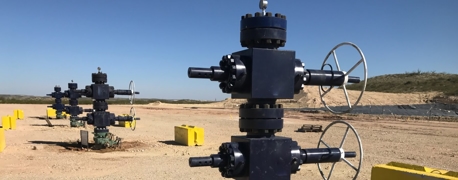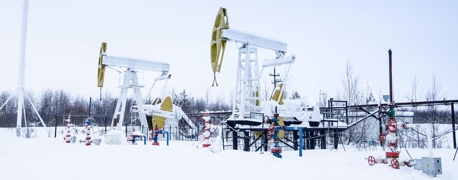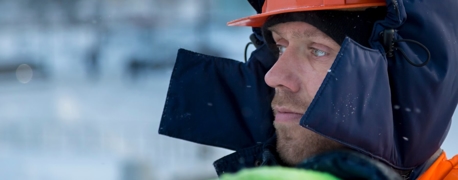What Does a Floorhand Do on a Rig?

The oil and gas industry is a complex and challenging field, and at the heart of its operations are the dedicated workers who ensure the smooth running of drilling rigs. Among these critical roles is that of the floorhand, a position that is as demanding as it is essential. Floorhands perform countless varied tasks throughout the course of any given shift, assisting other crew members, handling equipment, and cleaning the drill floor.
Though they hold entry-level roles, floorhands are pivotal in the productivity of oil rig operations.
Core Responsibilities of a Floorhand
A floorhand—often known as a "roughneck"—is a crew member on an oil rig, responsible for various tasks that keep the rig functioning efficiently. A floorhand is tasked with managing the rig floor under the guidance of more senior crew members and supervisors. The job requires physical strength, as it involves heavy lifting, and agility to move around the rig. In some regions, workers at this entry level are called “leasehands,” but the essential function remains the same: supporting drilling operations.
A floorhand’s day-to-day duties may include:
- Handling Drilling Equipment: Floorhands assist with assembling and disassembling drill pipes, operating tongs, and managing other critical tools.
- Rig Maintenance & General Upkeep: While the floorhand’s primary role involves pipe-handling and basic rig operations, they may also handle minor tasks like cleaning, painting, and equipment checks.
- Collaborating with the Crew: Floorhands work alongside and assist other crew members on the rig, such as motormen, derrickhands, and drillers.
A floorhand's job comes with risks that the company is legally responsible for mitigating. Working with heavy machinery and in potentially hazardous environments, floorhands are exposed to risks like slips, trips, falls, and injuries from handling equipment. High-pressure lines, combustible materials, and extreme weather conditions, especially on offshore rigs, add to the occupational hazards. The risks these conditions pose can be minimized, so long as company management takes responsibility for safety.
Advancing Through Continuous Learning & Collaboration
A floorhand’s role lays the groundwork for understanding how a drilling rig truly operates. Day in and day out, floorhands engage in tasks that build core skills—skills that can ultimately lead to higher-level positions like derrickhand and, down the road, driller. By staying adaptable, learning from seasoned crew members, and taking on greater responsibilities as they arise, floorhands develop the expertise and confidence needed to move up the rig hierarchy.
At the same time, success on a drilling site is never the work of one individual alone. Floorhands typically work side by side with derrickhands, drillers, and other specialists, providing critical support to keep operations running safely and efficiently. Communicating effectively with the entire crew is essential. After all, the rig is a collective environment where everyone depends on each other’s knowledge, vigilance, and teamwork. In this way, both continuous learning and strong collaboration go hand in hand—helping motivated floorhands progress in their careers while ensuring the rig operates at its best.
Land or Sea: Distinct Work Environments
Floorhands are employed in both onshore and offshore rigs. While the core responsibilities of floorhands on land and offshore rigs are similar, working conditions vary significantly, leading to differences in their daily routines, required skills, and safety protocols.
Land Rig Floorhands
Floorhands on land rigs might work in remote or harsh conditions—from scorching deserts to arctic climates. Although these rigs can be difficult to reach, they are still closer to roads and emergency services than offshore sites. Land rig floorhands may deal with the assembly and disassembly of drilling pipes, maintenance of drilling equipment, and general deck operations under the guidance of more experienced crew members.
The risks here include dealing with machinery, potential for slips and falls, and exposure to harsh weather conditions. Employers must ensure adequate safety measures—including well-maintained equipment and sensible schedules—to protect floorhands from hazards like extreme weather and heavy machinery.
Offshore Rig Floorhands
Offshore floorhands face additional challenges, living and working at sea for days or weeks at a time. They contend with unpredictable weather, confined living quarters, and complex drilling operations far from immediate medical assistance. On an offshore rig, floorhands play a big part in day-to-day rig tasks, with the added complication of undersea drilling, wet conditions, and potentially rough seas. They may need to undergo rigorous safety and survival training, including sea survival and helicopter evacuation procedures.
The isolation also requires a greater emphasis on mental health and teamwork, as the crew lives in close quarters for extended periods. The rig operator and owners are ultimately responsible for maintaining a safe environment, providing rigorous safety training, and ensuring all systems meet safety standards.
The Heart of Safety & Production
A floorhand’s efforts directly influence the pace and quality of drilling. Even routine tasks like attaching drill pipes or storing tools can affect rig production. Yet, no matter how dedicated or important an individual worker may be, the burden is not on them to create a safe workplace. That duty belongs to the oil and gas companies that employ floorhands, control operations, supply equipment, and structure the work environment.
It’s up to the rig operator—often a large oil company or contracting firm—to conduct regular inspections, invest in reliable machinery, and create safety protocols that protect everyone on an offshore platform or land rig. If a piece of equipment malfunctions, it’s not on the floorhand or leasehand to determine how or why—it’s the rig operator’s job to fix it and prevent harm.
When rig owners commit to routine maintenance and comprehensive training programs, they not only keep operations running smoothly but also protect workers from avoidable accidents.
Common Hazards Faced by Floorhands
The oil and gas industry is known for its high-risk environments, where the potential for catastrophic injury is a constant presence that must be continually mitigated through strict safety measures. Floorhands, with their hands-on role in the operation of oil rigs, are often directly exposed to a variety of hazards that can lead to life-changing accidents and injuries.
When safety isn’t put first, floorhands face such risks as:
- Fires and Explosions: One of the most severe risks on oil rigs comes from fires and explosions, which can result from the ignition of flammable gases or liquids. These incidents can lead to burns, inhalation injuries, and even fatalities.
- Slip and Fall Accidents: Wet or oil-slicked surfaces, loose cables, or faulty deck grating can lead to serious falls. Rig owners must maintain clear walkways, effective drainage, and anti-slip measures on land and offshore.
- Toxic Chemical Leaks: Exposure to toxic chemicals, either through leaks or during handling, can cause burns, respiratory issues, and long-term health effects. Proper handling, storage, and emergency response to hazardous materials are critical in protecting floorhands from these risks.
- Drilling Blowouts: A blowout occurs when control over the well is lost, allowing oil or gas to escape at high pressure. These events can lead to fires, explosions, and direct injury from the force of the escaping fluids. Rigorous well-control practices and blowout-preventer systems are essential safeguards.
- Equipment Malfunctions: The malfunction of drilling equipment can result in floorhand crush injuries, lacerations, and amputations. Regular maintenance and safety checks, along with proper training in equipment operation, are key to minimizing these risks.
- Electrocutions: Working with electrical equipment in wet conditions or environments where flammable gases may be present increases the risk of electrocution. Electrical safety training and equipment grounding are crucial preventive measures.
- Oil or Gas Leaks: Leaks can lead to fire hazards, explosions, and health issues from inhalation. Monitoring systems and quick response strategies are necessary to address leaks promptly.
- Falling Objects: Tools or materials dropped from a height can cause severe floorhand injuries, including head trauma and traumatic brain injuries. Wearing safety helmets and securing tools properly can mitigate these dangers.
- Falling From a Height: Falls from ladders, platforms, or other elevated positions can result in serious injuries or fatalities. Fall protection systems and training are essential for rig workers at a height.
- Hydraulic Machinery Malfunctions: Failures in hydraulic systems can lead to sudden energy releases, causing injuries from flying debris or machinery movement. Regular inspection and maintenance of hydraulic systems help prevent these accidents.
- Breaks or Snapbacks of Lines: The sudden break or snapback of drilling lines or cables can whip objects through the air, posing a significant risk to nearby floorhands. Ensuring proper line integrity and maintaining clear zones around potential snapback areas are important safety measures.
- Transportation Risks: Getting to remote rigs often involves travel by helicopter, boat, or specialized vehicles. Employers must ensure that these transportation methods meet safety regulations.
Employers Are Accountable for Floorhand Safety
Employers, manufacturers, rig operators, and other companies involved in drilling operations on land or at sea bear the ultimate responsibility for floorhand safety. This includes conducting thorough inspections of all equipment, performing maintenance, and replacing aging equipment when necessary. It includes developing and implementing appropriate training programs for every role on the rig. It also includes enforcing protective measures like proper signage, safety drills, and adequate personal protective equipment (PPE), as well as responding promptly to worker complaints or concerns about hazards.
When employers cut corners on safety—whether to reduce costs or speed up production—the results can be devastating. Serious injuries, life-altering conditions, or even fatalities can occur. In these moments, it’s essential for injured workers and their families to know they have rights and legal avenues to hold responsible parties accountable.
Looking to the Future
Floorhands embody the grit and determination that define the oil and gas industry. The job demands peak physical endurance and the ability to thrive under pressure. As the industry evolves, so too will the role of the floorhand, adapting to new technologies and changing safety standards. However, their fundamental contribution to rig operations will undoubtedly remain critical.


